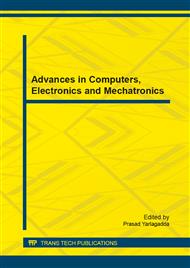p.269
p.273
p.277
p.286
p.291
p.300
p.311
p.318
p.324
Cluster-Gossip Based Distributed Kalman Consensus Filter Algorithm with Energy Efficiency
Abstract:
According to these constrains that wireless sensor networks are composed of many wireless nodes with limited power, a new energy efficient cluster-based distributed consensus kalman filtering algorithm is proposed in this paper. In this algorithm, each cluster contains a cluster-head and some member nodes where the cluster-head is used to fuse data which come from member nodes and consensus process between neighbor cluster-head. This clustering method divide wireless sensor networks into two classes of networks: cluster units network and cluster-heads network. In this way, numbers of information transmission among nodes are reduced efficiently and communication distances among nodes are also shortened. As a result, node’s energy in wireless sensor network can be saved greatly. Moreover, Gossip algorithm is introduced to deal with the consensus problem between cluster-heads for improving power consumption and the convergence analysis for the algorithm which is given by applying to graph theory and matrix theory. Finally, a simulation example is given to show the effectively of our method.
Info:
Periodical:
Pages:
291-299
Citation:
Online since:
October 2014
Authors:
Price:
Сopyright:
© 2014 Trans Tech Publications Ltd. All Rights Reserved
Share:
Citation:


